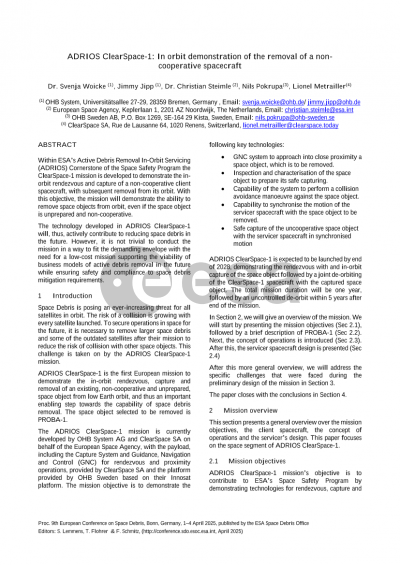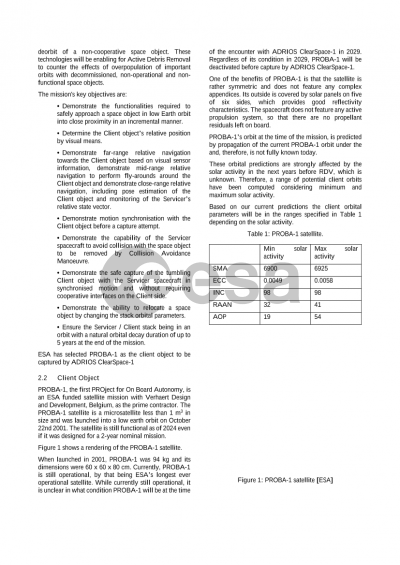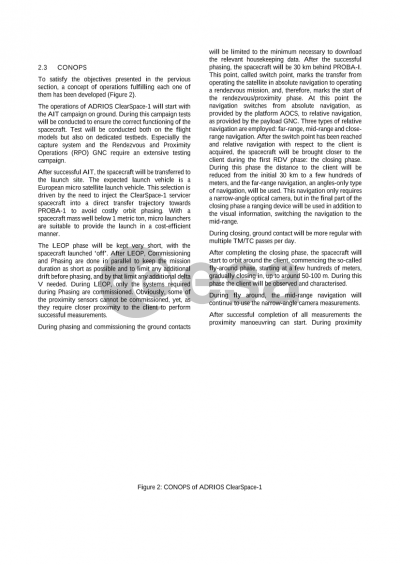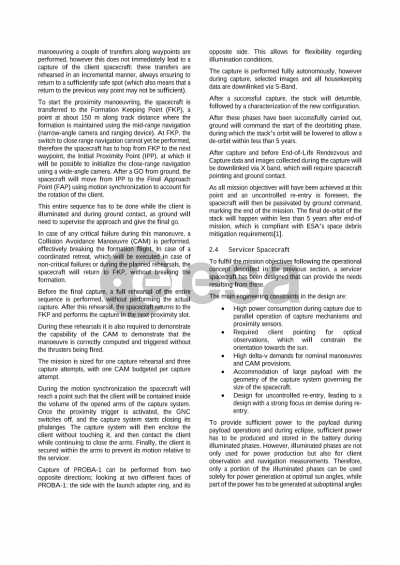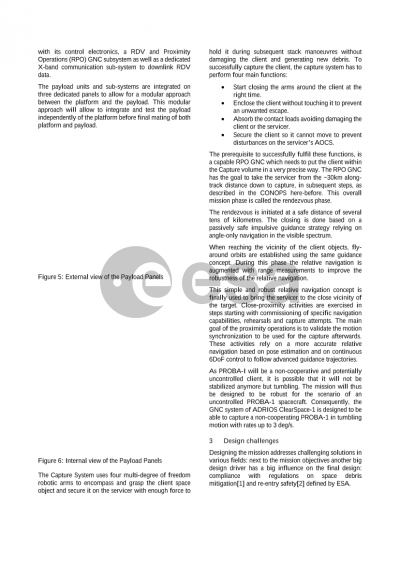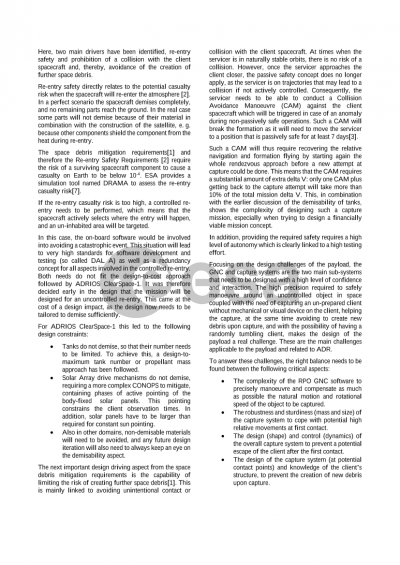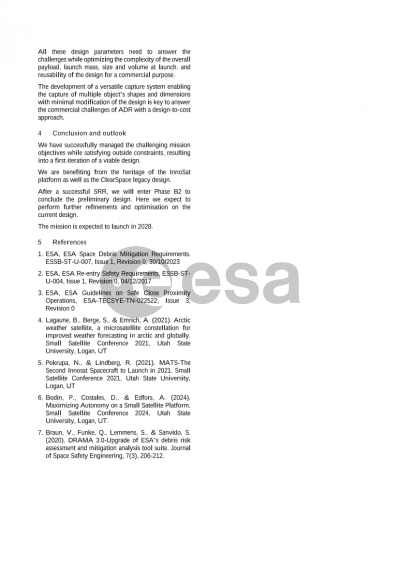Document details

Abstract
Space Debris is posing an ever-increasing threat for all satellites in orbit. The risk of a collision is growing with every satellite launched. To secure operations in space for the future, it is necessary to remove larger space debris and some of the outdated satellites after their mission in order to reduce the risk of collision with other space objects. This challenge is taken on by the ESA Space Safety Programme and its Active Debris Removal and In-Orbit Servicing (ADRIOS) Cornerstone “ClearSpace-1”.
ADRIOS ClearSpace-1 is the first European mission to demonstrate the in-orbit rendezvous, capture and removal of an existing, non-cooperative and unprepared, space object from low Earth orbit, and thus an important enabling step towards the capability of space debris removal.
The ADRIOS ClearSpace-1 mission will be led by OHB System as prime contractor of the European Space Agency, with the payload provided by ClearSpace and the platform provided by OHB Sweden based on their Innosat platform. The mission objective is to demonstrate the following key technologies:
• The GNC system to approach into close proximity of a space object to be removed.
• The inspection and characterisation the space object to prepare its safe capturing.
• The capability of the system to perform a collision avoidance manoeuvre against the space object.
• The capability to synchronise the motion of the servicer spacecraft with the space object to be removed.
• The safe capture of the uncooperative space object with the servicer spacecraft in synchronised motion.
ADRIOS ClearSpace-1 is scheduled to be launched by end of 2028, demonstrating the rendezvous with and in-orbit capture of the space object followed by a joint de-orbiting of the ClearSpace-1 spacecraft with the captured space object. The total mission duration will be one year, followed by an uncontrolled de-orbit within 5 years after end of the mission.
As the space object to be removed, PROBA-1 has been selected, an ESA spacecraft launched in 2001. To date PROBA-1 is still operational and, therefore, still controlled by ESA operations, being ESA’s longest operated Earth observation mission. However, it is of course not given that PROBA-1 will still be operational in 2028, at the time of the in-orbit capturing manoeuvre. The mission will thus be designed to be robust for the scenario of an uncontrolled PROBA-1 spacecraft. Consequently, the GNC system of ADRIOS ClearSpace-1 is designed to be able to capture a non-communicating PROBA-1 in tumbling motion with rates up to 3 deg/s. ADRIOS ClearSpace-1 will be designed for at least three capture attempts. To this end, the spacecraft will feature an advanced GNC system, using vision-based navigation for target identification and tracking.
Designing the mission addresses challenging solutions in various fields, for example the compliance with regulations on space debris mitigation and re-entry safety defined by ESA, specifically providing an approach concept that is safe to avoid a collision with the client spacecraft. But also providing enough delta V and power for the challenging proximity operations. And also offering a high level of autonomy to the system, to increase robustness of the operational concept and limit operational cost.
To solve the challenging propulsion demands, ADRIOS ClearSpace-1 is expected to be launched on a direct transfer trajectory by a micro launch provider with a dedicated launch. To comply with space debris mitigation requirement, a robust approach to collision avoidance manoeuvres will be designed to ensure mission safety even if a failure of an equipment has occurred.
The paper will present the mission design which satisfied the mission objectives, highlighting the solutions found to address the design challenge.
Preview
